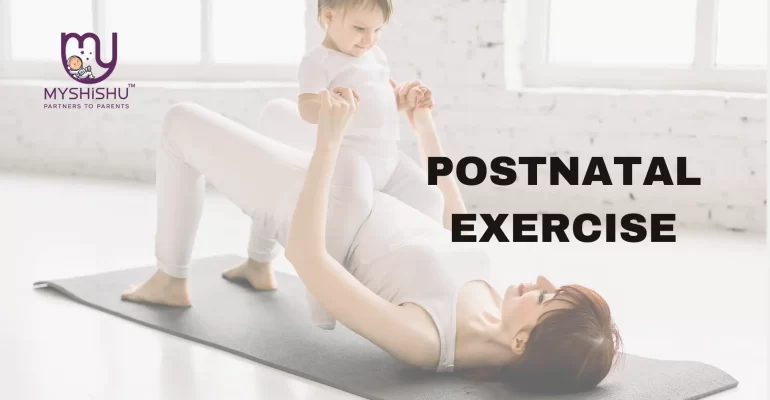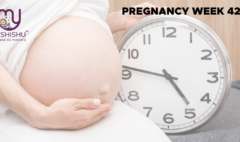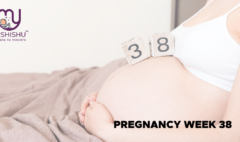Exercise After C Section: A Reliable Guide for Getting Back on Track
Exercise After C Section: A Reliable Guide for Getting Back on Track
Introduction
Welcome to a guide on the topic of exercise after c section. Congratulations on welcoming your little bundle of joy into the world! As you embark on this incredible journey of motherhood, it’s essential to prioritize your own health and well-being, especially as you navigate the recovery process after a cesarean section (C-section). While the road to postpartum fitness may seem daunting, know that you’re not alone.
In this blog, we’ll explore the importance of exercise after C section and provide you with valuable insights and tips to exercise after c-section and effectively incorporate physical activity into your postpartum routine. So, grab a cup of tea, take a moment for yourself, and let’s embark on this journey together, one step at a time.
Benefits of Exercise After C Section
Exercise after C-section offers a multitude of benefits for new moms as they navigate the postpartum period. Here’s a closer look at some of the key advantages:
- Speeds Up Recovery: Engaging in gentle exercise can help promote blood circulation and oxygen flow to the surgical site, aiding in the healing process and reducing postoperative discomfort.
- Strengthens Core Muscles: Pregnancy and childbirth can weaken the abdominal muscles, but targeted exercise after C section can help rebuild core strength, providing support for the spine and pelvis and reducing the risk of future back pain.
- Improves Mood: Exercise after c-section triggers the release of endorphins, the body’s natural feel-good hormones, which can help alleviate stress, anxiety, and symptoms of postpartum depression, promoting overall mental well-being.
- Increases Energy Levels: While caring for a newborn can be exhausting, regular exercise after c-section can help boost energy levels and combat fatigue, allowing new moms to tackle daily tasks with greater vitality and stamina.
- Promotes Weight Loss: Incorporating exercise after c-section into your routine can aid in shedding pregnancy weight and toning muscles, helping you achieve your pre-pregnancy fitness goals and boost self-confidence.
- Enhances Sleep Quality: Regular exercise after c-section has been shown to improve sleep quality and duration, which is particularly beneficial for new moms who may be struggling with sleep disturbances due to the demands of caring for a newborn.
- Provides Social Support: Joining postnatal exercise classes or mommy-and-me fitness groups can provide opportunities for social interaction and support, allowing new moms to connect with others who are going through similar experiences and share advice and encouragement.
Overall, exercise after C-section offers numerous physical, mental, and emotional benefits, empowering new moms to feel stronger, more energized, and better equipped to navigate the joys and challenges of motherhood.
Safe Exercises After C-Section
Exercise after C-section, it’s crucial to start with gentle exercise after c section that promote healing without putting undue strain on the surgical incision site. Here are some safe exercise after c section to consider incorporating into your postpartum routine:
- Walking: Begin with short walks around your home or neighborhood, gradually increasing the duration and intensity as you feel comfortable. Walking promotes blood circulation, aids in digestion, and helps prevent blood clots.
- Pelvic Floor Exercises: Pelvic floor exercise after c section, such as Kegels, can help strengthen the muscles that support your bladder, uterus, and bowels. These exercise after c section are particularly beneficial for improving bladder control and preventing urinary incontinence.
- Deep Breathing and Stretching: Incorporate deep breathing exercise after c-section and gentle stretching to improve flexibility, relieve tension, and promote relaxation. Focus on stretching your upper body, neck, shoulders, and back to alleviate discomfort and improve posture.
- Low-Impact Aerobics: Engage in low-impact aerobic activities, such as swimming, stationary cycling, or prenatal yoga, to elevate your heart rate without putting excessive strain on your body. These activities help improve cardiovascular health, boost mood, and increase energy levels.
- Core Strengthening: Gradually incorporate core-strengthening exercises into your routine to rebuild abdominal strength and stability. Begin with gentle exercises such as pelvic tilts, pelvic lifts, and abdominal bracing, gradually progressing to more challenging moves as your strength improves.
- Upper Body Exercises: Perform gentle upper body exercises, such as arm circles, shoulder rolls, and bicep curls using light weights or resistance bands. These exercise after c-section help improve upper body strength and tone without putting strain on the abdominal muscles.
- Posture Exercises: Focus on exercise after c-section that promote good posture and alignment, such as shoulder blade squeezes, chest openers, and chin tucks. Proper posture can help alleviate back pain, improve breathing, and prevent muscle imbalances.
It’s essential to listen to your body and avoid any exercise after c-section that cause pain, discomfort, or unusual symptoms. If you experience persistent pain or have concerns about your postpartum recovery, consult with your healthcare provider before starting or continuing any exercise program. Remember to start slowly, progress gradually, and prioritize rest and recovery to support your body’s healing process after a C-section.
Tips for Safe Exercise After C-Section
When incorporating exercise into your post-C-section recovery, it’s essential to prioritize safety and listen to your body’s cues. Here are some tips for safe exercises after c-section:
- Obtain Clearance from Your Healthcare Provider: Before starting any exercise program, consult with your healthcare provider to ensure you’re medically cleared for physical activity. Your provider can offer personalized recommendations based on your individual recovery and health status.
- Start Slowly and Gradually Increase Intensity: Begin with low-impact exercise after c-section and gradually increase the duration, frequency, and intensity as your strength and stamina improve. Avoid pushing yourself too hard or progressing too quickly, as this can increase the risk of injury or complications.
- Listen to Your Body: Pay attention to how your body feels during and after exercise. If you experience pain, discomfort, or unusual symptoms, stop immediately and rest. It’s normal to feel some discomfort during the early stages of recovery, but persistent pain may indicate that you’re overdoing it.
- Focus on Core and Pelvic Floor Exercises: Incorporate gentle core-strengthening and pelvic floor exercises into your routine to rebuild abdominal strength and support. Avoid exercise after c-section that place excessive strain on the abdominal muscles, such as sit-ups or crunches, until you’ve fully healed.
- Use Proper Form and Technique: Pay attention to your posture and alignment during exercise after c-section to prevent strain or injury. Engage your core muscles, maintain a neutral spine, and use controlled movements to avoid putting undue stress on your body.
- Stay Hydrated and Nourished: Drink plenty of water before, during, and after exercise after c-section to stay hydrated, especially if you’re breastfeeding. Eat a balanced diet rich in nutrients to fuel your body for exercise after c-section and support your recovery.
- Wear Supportive Clothing: Invest in supportive bras, abdominal binders, and comfortable footwear to provide additional support and stability during exercise. Choose moisture-wicking fabrics that allow your skin to breathe and prevent chafing or irritation.
- Prioritize Rest and Recovery: Allow your body adequate time to rest and recover between exercise sessions. Aim for at least 7-9 hours of quality sleep per night to support your body’s healing process and optimize recovery.
- Modify and Adapt as Needed: Be flexible and willing to modify your exercise routine based on how you feel on any given day. Listen to your body’s cues and adjust the intensity, duration, or type of exercise as needed to ensure you’re exercising safely and effectively.
- Be Patient and Gentle with Yourself: Remember that post-C-section recovery takes time, and it’s normal to progress at a slower pace than you may have anticipated. Be patient with yourself, celebrate your progress, and focus on gradual improvements rather than perfection.
By following these tips and listening to your body’s needs, you can safely and effectively incorporate exercise into your post-C-section recovery, promoting overall health, strength, and well-being as you navigate the journey of motherhood.

Recovery Timeline for Post C-Section Recovery
Recovery from a cesarean section (C-section) varies from person to person, but understanding the general timeline can help you navigate your postpartum journey more effectively. Here’s a breakdown of the typical recovery timeline for post-C-section recovery:
- Immediately After Surgery (Days 1-3):
- Hospital Stay: Most women remain in the hospital for 2-4 days following a C-section, although this may vary depending on individual circumstances and medical factors.
- Pain Management: You’ll receive pain medication to manage discomfort and promote healing. Over-the-counter pain relievers may be recommended after discharge.
- Early Mobility: Hospital staff will encourage you to start moving around as soon as possible, typically within the first 24 hours after surgery. Gentle walking can help prevent blood clots and promote circulation.
- Week 1:
- Limited Activity: During the first week post-C-section, focus on rest and recovery. Avoid heavy lifting, strenuous activity, and driving until you receive clearance from your healthcare provider.
- Incision Care: Keep the incision site clean and dry, and follow any specific wound care instructions provided by your healthcare provider. Report any signs of infection, such as redness, swelling, or discharge.
- Pain Management: Continue taking pain medication as prescribed to manage discomfort. Over-the-counter pain relievers, such as acetaminophen, may be sufficient for mild to moderate pain.
- Weeks 2-4:
- Gradual Increase in Activity: As you start to feel better, gradually increase your activity level, but continue to avoid heavy lifting and strenuous exercise. Listen to your body and rest as needed.
- Follow-up Appointment: Attend your postpartum follow-up appointment with your healthcare provider, usually scheduled around 4-6 weeks after delivery. Your provider will assess your recovery progress, address any concerns, and provide guidance on resuming normal activities.
- Weeks 4-6:
- Resuming Light Exercise: With clearance from your healthcare provider, you can begin incorporating light exercise into your routine, such as walking, gentle stretching, and pelvic floor exercises. Start slowly and listen to your body’s cues.
- Weeks 6-8:
- Increasing Activity: As you progress in your recovery, gradually increase the intensity and duration of your exercise sessions. Focus on strengthening exercises for the core, pelvic floor, and other major muscle groups.
- Weeks 8-12:
- Returning to Normal Activities: By this point, you should be feeling more like yourself and able to resume most normal activities, including moderate-intensity exercise, household chores, and caring for your baby.
- Beyond 12 Weeks:
- Full Recovery: While most women feel significantly better by 12 weeks post-C-section, it may take several months to fully recover. Be patient with yourself and continue to prioritize self-care, proper nutrition, and regular exercise to support your ongoing recovery.
Remember that every woman’s recovery journey is unique, and it’s essential to listen to your body and follow your healthcare provider’s guidance throughout the recovery process. If you experience any concerning symptoms or have questions about your recovery, don’t hesitate to reach out to your healthcare provider for support and guidance.
Cautions and Considerations
- Avoid Heavy Lifting: During the initial weeks of recovery, refrain from lifting heavy objects, including your baby’s car seat or stroller, as this can strain the abdominal muscles and delay healing. When lifting your baby, use proper body mechanics and support the weight with your arms and legs rather than your core muscles.
- Take Precautions with Stairs: If your home has stairs, use caution when navigating them during the early stages of recovery. Take your time and hold onto handrails for support, especially if you’re feeling dizzy or unsteady. Consider minimizing stair climbing as much as possible until you feel more confident and stable.
- Monitor for Signs of Infection: Keep a close eye on the incision site for any signs of infection, such as redness, swelling, warmth, discharge, or increasing pain. If you notice any concerning symptoms, contact your healthcare provider promptly for further evaluation and treatment.
- Practice Good Hygiene: Maintain good hygiene practices to reduce the risk of infection. Keep the incision site clean and dry, and avoid swimming or soaking in baths until the incision has fully healed. Wash your hands frequently, especially before handling the incision site or caring for your baby.
- Be Mindful of Scar Tissue: As your incision heals, be mindful of scar tissue formation and potential adhesions. Gently massage the scar area with lotion or oil to promote tissue flexibility and prevent adhesions from forming. Avoid applying excessive pressure or stretching to the scar until it has fully healed.
- Listen to Your Body: Pay attention to your body’s signals and avoid activities that cause pain, discomfort, or excessive fatigue. Take breaks as needed, prioritize rest and relaxation, and enlist support from friends, family members, or a postpartum doula to help with household tasks and childcare responsibilities.
- Gradually Increase Activity: While it’s essential to stay active during the recovery period, avoid overexertion and excessive strain on your body. Gradually increase the intensity and duration of your activities as you feel stronger and more confident, but always listen to your body and rest when needed.
- Follow Healthcare Provider’s Recommendations: Follow your healthcare provider’s postpartum care instructions closely and attend all scheduled follow-up appointments. Your provider can monitor your recovery progress, address any concerns, and provide guidance on when it’s safe to resume normal activities, including exercise and sexual intercourse.
Additional Common Questions
-
When can I start exercising after a C-section?
It’s essential to wait until you receive clearance from your healthcare provider, usually around 6-8 weeks postpartum. However, this timeline may vary depending on individual factors and the type of delivery. Always consult with your provider before starting any exercise program.
-
Can I do abdominal exercises after a C-section?
It’s essential to wait until your abdominal muscles have fully healed before performing traditional abdominal exercises such as crunches or sit-ups. Instead, focus on gentle core-strengthening exercises that engage the deep abdominal muscles and pelvic floor, such as pelvic tilts or abdominal bracing.
-
How should I modify my exercise routine if I experience pain or discomfort?
If you experience pain or discomfort during exercise, stop immediately and rest. Modify your routine by reducing the intensity, duration, or complexity of the exercise, and avoid movements that exacerbate pain or discomfort. If pain persists, consult with your healthcare provider for further evaluation.
-
How long does it take to regain strength and fitness after a C-section?
Recovery time varies for each individual, but it may take several months to regain pre-pregnancy strength and fitness levels. Be patient with yourself and focus on gradual progress rather than comparing yourself to others. Consistency, proper nutrition, and adequate rest are key components of a successful post-C-section recovery and fitness journey.
Conclusion
In conclusion, incorporating exercise into your post-C-section recovery journey can be beneficial for both your physical and mental well-being. By gradually reintroducing physical activity, listening to your body, and following the guidance of your healthcare provider, you can support your body’s healing process and regain strength and fitness after childbirth. Remember that every woman’s recovery journey is unique, so be patient with yourself and celebrate small victories along the way.
As you embark on your postpartum fitness journey, prioritize self-care, nourishing your body with nutritious foods, staying hydrated, and getting adequate rest. By taking care of yourself, you’ll be better equipped to care for your new baby and enjoy the journey of motherhood to the fullest. Remember, you’re stronger than you think, and with determination and perseverance, you can achieve your post-C-section fitness goals.

want to know more
Explore Our Courses











